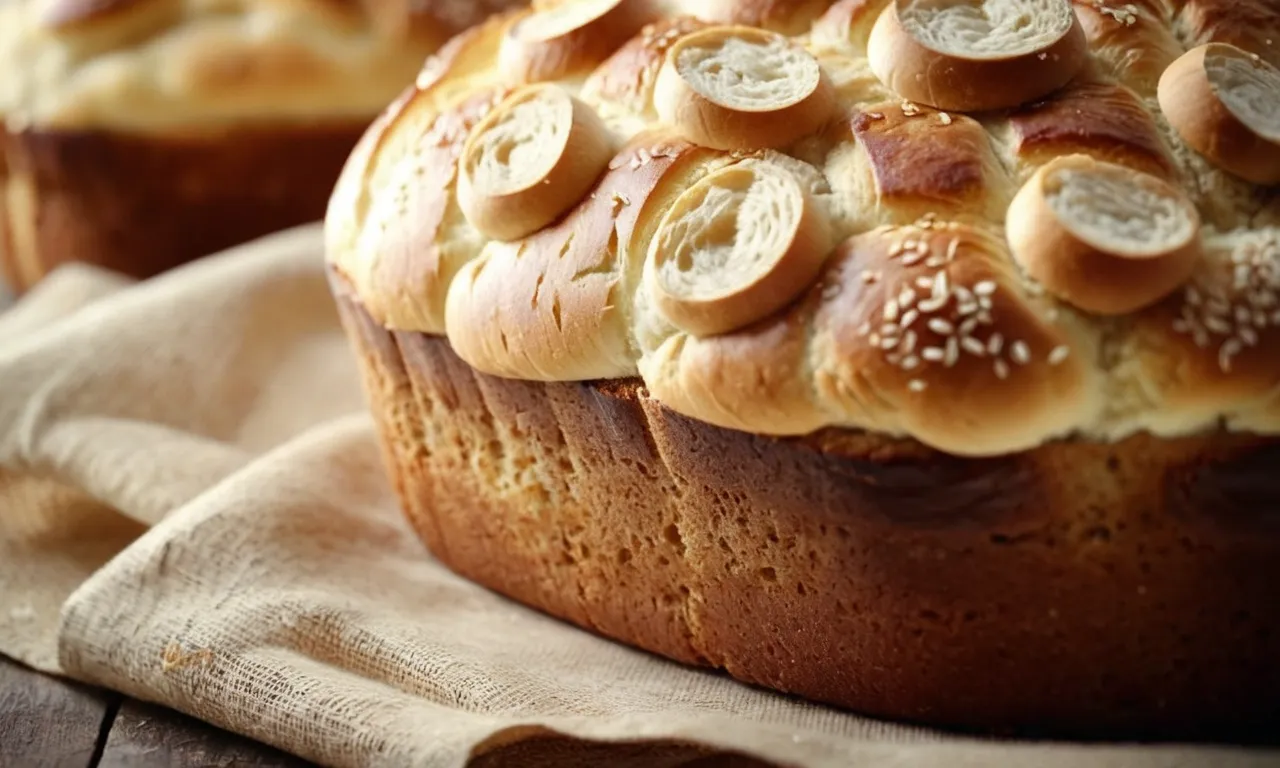What Does Yeast Represent In The Bible?
Yeast is an important symbol that appears several times throughout the Bible. If you’re looking for a quick answer, here’s the gist: yeast in the Bible often represents sin, corruption, and the growth of evil influences.
In this comprehensive article, we’ll explore the meaning and significance behind yeast and leaven in the Scriptures. We’ll look at relevant passages in both the Old and New Testament, examining how yeast is used in parables, laws, and teachings of Jesus.
By the end, you’ll understand the rich biblical symbolism associated with yeast and what spiritual truths these metaphors point to.
Yeast in the Old Testament
Yeast Represents Sin During Passover
During the Passover celebration commemorating the Israelites’ exodus from Egypt, God commanded His people to remove all yeast from their homes for 7 days (Exodus 12:15). This represented the removal of sin and impurities from their lives as they remembered God’s deliverance.
The week-long Feast of Unleavened Bread followed Passover, abstaining from yeast symbolizing a holy walk with God (Exodus 12:17-20).
Centuries later, Jesus used yeast figuratively to warn His disciples against slippery slopes of sinful contamination by false teaching (Matthew 16:6-12). Just as yeast pervades an entire lump of dough, Christ compared even small amounts of false doctrine to yeast that could spread widely.
He reminded them that the yeastless bread of sincerity and truth was what God desires.
A Symbol of Corruption in the Prophets and Psalms
The Prophets sometimes used yeast as a metaphor for the infectious spread of societal evils. Hosea condemned the prevalent idolatry in Israel “multiplying lies and violence” as yeast ferments dough (Hosea 7:4).
Calling out the people’s empty ritualism devoid of justice and mercy, Amos depicted their festivals as “leavened bread” displeasing to God (Amos 4:5).
The Psalmist also associated yeast with contagious societal corruption. In a passionate prayer for God’s intervention against evildoers, he described them as arrogant people “whose poison is like the poison of a serpent, like the deaf adder that stops its ear, so that it does not hear the voice of charmers or of the cunning enchanter” (Psalm 58:4-5).
Jesus’s Teachings on Yeast
Parable of the Leaven
In the Parable of the Leaven (Matthew 13:33), Jesus uses yeast as a symbol for the kingdom of heaven. He says, “The kingdom of heaven is like leaven that a woman took and hid in three measures of flour, till it was all leavened.”
Here, the small amount of yeast spreads throughout the large batch of dough, causing it to rise. This illustrates how the kingdom of heaven, even though starting small, will dramatically increase and spread everywhere.
The Parable of the Leaven reveals some key aspects of Jesus’s teachings on the kingdom of God. First, it shows that God’s kingdom grows in a hidden and mysterious way that is not always evident to people. Though the yeast is tiny, its influence is profound.
Second, it indicates that God’s kingdom starts small but will exponentially increase. And third, it conveys that God’s kingdom has a transforming power that spreads to everything it touches, like yeast causing dough to rise.
Beware the Leaven of the Pharisees
In contrast to the Parable of the Leaven, Jesus also uses yeast in a negative sense when he warns his disciples to “beware the leaven of the Pharisees” (Matthew 16:6; Mark 8:15; Luke 12:1). In this metaphor, the “leaven” represents the Pharisees’ hypocrisy and teachings that Jesus considered self-righteous and opposed to God’s true kingdom.
On one occasion, Jesus chastises the disciples for worrying about not having enough bread, reminding them of his earlier miraculous provision of bread. He tells them to beware the “leaven” of the Pharisees and Sadducees.
The disciples misinterpret Jesus, thinking he is talking about actual yeast or bread. But Jesus makes it clear that he is speaking metaphorically about the dangerous theological teaching of the religious leaders that could corrupt people inwardly (Matthew 16:5-12).
Elsewhere in Matthew’s Gospel, Jesus warns similarly against the “leaven of the Pharisees and Sadducees,” linking it explicitly to their “teaching” (Matthew 16:12). He cautions against both the Pharisees’ hypocrisy in outwardly appearing righteous but being sinful inwardly, as well as against their human religious traditions that voided God’s word (Matthew 15:1-9).
So when Jesus tells his followers to avoid the yeast of the Pharisees, he means that they should beware of adopting the Pharisees’ hypocritical practices and flawed human theology that distorted the truth about God’s kingdom.
Rather than contributing to the kingdom of heaven like the yeast in the Parable of the Leaven, the Pharisees’ “leaven” had a corrupting influence.
Yeast as a Metaphor in Paul’s Letters
Malice and Evil as Leaven
In several of his letters, the apostle Paul uses yeast or leaven as a metaphor for the spread of malice and evil. For instance, in 1 Corinthians 5:6-8, Paul urges the Corinthian church to purge out the old leaven of malice and wickedness and become a new unleavened batch of dough.
He warns that “a little leaven leavens the whole lump” (v. 6), meaning that even a small amount of sin can corrupt the whole church body. Paul wants the Corinthians to remove the person who has been immoral from their midst so that his sin doesn’t spread.
Paul uses similar leaven imagery in Galatians 5:9 when confronting the issue of people insisting that Gentile believers must follow the Mosaic law and be circumcised. He argues that adding any requirement to simple faith in Christ takes away from the gospel.
Insisting on circumcision would be like introducing yeast that would grow and spread until the whole lump of dough puffs up. Instead, Paul wants the Galatians to hold firm to the true gospel and not let false teachings intrude and take over.
Old Leaven and New Dough
In his letter to the church in Corinth, Paul also speaks of old leaven and new dough (1 Cor. 5:7). During the Passover feast, the Israelites were to remove all leaven from their homes and eat unleavened bread. This signified the removal of sin and corruption from among God’s people.
Paul picks up this imagery and tells the Corinthians that since they are a new unleavened batch of dough in Christ, they should remove the old leaven of sin. They are to live in sincerity and truth, leaving behind their former ways.
The metaphor of leaven is an apt one for illustrating the infectious nature of sin and false teaching. Even a small amount, if left unchecked, can grow and spread rapidly. Paul urges his readers to be on guard, removing wickedness from their midst and holding fast to the true gospel message he preached to them.
His vivid imagery drives home the urgent need for moral and doctrinal purity in the church.
Putting It All Together
Yeast Spreads and Influences
As illustrated throughout Scripture, yeast is used metaphorically to represent influence that spreads. Just as a little yeast permeates an entire lump of dough, sin can spread and negatively impact communities (1 Corinthians 5:6-8).
Like yeast causes dough to rise, evil influences can swell and grow out of proportion if left unchecked. According to one analysis, the number of hate groups in America increased by 30% from 2015-2019, showing how prejudice can proliferate (SPLC).
This emphasizes the need for moral courage to counteract dangerous influences before they spread out of control.
Sin and Corruption vs. Purity and Holiness
As yeast is excluded from bread during Passover, the Bible uses yeast metaphorically to represent impurity that must be removed. Just as faithful Jews symbolically purge corrupting yeast from their homes, believers must examine their hearts and remove attitudes or behaviors displeasing to God, including greed, pride, hypocrisy and self-righteousness.
Scriptures connect yeast with maliciousness and wickedness (1 Cor 5:8), while purity and sincerity are aligned with unleavened bread (1 Cor 5:6-8). As we grow in faith, we must increasingly model our lives after Jesus’ example of selfless love and holy living to positively influence others.
Conclusion
In summary, the Bible uses yeast as an important symbol of the pervasiveness of sin and evil influences. This metaphor appears through teachings, parables, prophecies, and letters across both the Old and New Testament.
By exploring the context around yeast and leaven in the Scriptures, we gain a deeper understanding of the biblical worldview regarding holiness, morality, and the struggle against corruption. Just as yeast permeates an entire lump of dough, sin can spread through one’s life and community if left unchecked.
Jesus and the prophets warn believers to be on guard against even small hints of evil teachings or behaviors, represented by the imagery of yeast.








